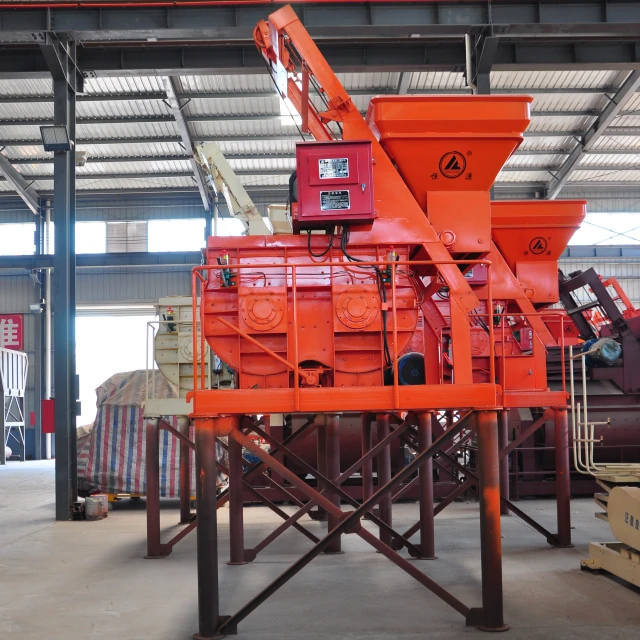Introduction
Operational failures in belt conveyors and bucket elevators can cripple productivity in concrete plants, leading to costly downtime and safety risks. This guide delivers proven strategies to maintain these critical systems—from noise reduction techniques to IoT-powered monitoring—ensuring your equipment runs at peak efficiency for years.
Ensuring Operational Efficiency in Concrete Mixing Plants
Concrete plants rely on uninterrupted material flow, where even minor conveyor or elevator malfunctions can cascade into production delays. The key lies in understanding two core principles:
-
Preventive Maintenance Over Reactive Repairs
- Industry data shows unplanned downtime costs concrete plants up to 30% more than scheduled maintenance.
- Example: A single jammed bucket elevator chain can halt production for 4–8 hours for manual clearing.
-
Human-Machine Synergy
Operators who recognize early warning signs (e.g., unusual vibrations or slower belt speeds) can intervene before catastrophic failures occur.
Ever wondered why some plants achieve 95%+ equipment uptime while others struggle? The difference often boils down to proactive care.
Key Challenges in Conveyor and Elevator Systems
1. Abnormal Noises: The First Red Flag
Grinding or screeching sounds typically indicate:
- Misaligned pulleys
- Worn bearings (replace every 12–18 months under heavy use)
- Insufficient lubrication (apply high-temperature grease monthly)
2. Chain Jams in Bucket Elevators
Primary causes and fixes:
| Cause | Solution |
|---|---|
| Material buildup in buckets | Install vibratory cleaners at discharge points |
| Overloaded chains | Reduce feed rates by 15% during peak operation |
| Corroded links | Use stainless-steel chains in humid environments |
Think of your elevator chain as a bicycle’s—neglect lubrication, and friction will grind it to a halt.
Proactive Maintenance Strategies for Noise and Jam Prevention
Weekly Checklist for Belt Conveyors
- Belt Tracking Adjustment: Use laser alignment tools to correct deviations >2mm.
- Roller Inspection: Replace seized rollers immediately—they increase energy consumption by up to 20%.
Monthly Bucket Elevator Protocols
- Tension Testing: Chains should deflect no more than 2% of the span length under load.
- Bucket Integrity Check: Cracked buckets risk material spillage; replace if wear exceeds 10% of thickness.
Did you know? Properly tensioned belts can extend conveyor motor life by 3 years.
Leveraging Technology for Enhanced Equipment Performance
IoT-Driven Monitoring Solutions
Modern sensors track:
- Temperature spikes in bearings (early signs of failure)
- Vibration patterns to predict misalignment
- Load imbalances that strain motors
Case Study: Reducing Downtime in a High-Capacity Plant
A Midwest concrete plant cut elevator-related stoppages by 72% after installing wireless load sensors. Real-time alerts allowed mechanics to address issues during scheduled breaks instead of mid-production.
Conclusion: Building a Failure-Resistant Operation
- Adopt Predictive Maintenance – Use data to fix problems before they escalate.
- Train Staff on Early Indicators – Empower teams to spot and report subtle changes.
- Invest in Smart Upgrades – IoT tools pay for themselves within 12 months via saved downtime costs.
For plants relying on Garlway winches and machinery, integrating these practices ensures your equipment delivers the durability promised by the brand. Start with one high-impact change—like quarterly laser alignments—and scale from there.
Final thought: In concrete production, reliability isn’t just about machinery; it’s about the people and processes that keep it running.
Related Products
- Ready Mixer Machine for Construction Ready Mix Machinery
- Portable Concrete Mixer Machine Equipment for Mixing Concrete
- Commercial Construction Mixer Machine for Soil Cement Mixing Concrete
- Hydraulic Concrete Mixer Machine Cement Mixing Equipment for Mixture Concrete
- Concrete Cement Mixer Machine Drum Mixer for Construction
Related Articles
- How to Test Concrete Mixer Brake Systems for Optimal Safety and Compliance
- How to Build an OSHA-Compliant Safety System for Concrete Mixer Workspaces
- How to Choose Concrete Mixers for Long-Term Reliability and Cost Savings
- How to Choose the Right Concrete Type for Every Construction Challenge
- How to Master Concrete Mixer Operation: Training, Certification, and Safety Protocols











